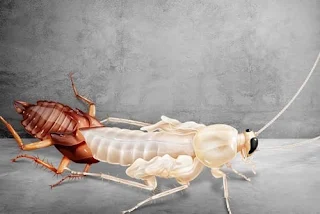Introduction
Cockroaches are renowned for their resilience and adaptability. One of the lesser-known, yet fascinating aspects of their biology is the process of molting, where they shed their exoskeleton. In this article, we'll delve into the science behind why cockroaches shed their skin and explore the remarkable adaptations that make them such survivors.
What is Molting?
Molting is a natural process common among arthropods, including insects like cockroaches. It's essentially a form of growth and development that involves shedding their old exoskeleton and replacing it with a new one. This process is crucial for various reasons in the life of a cockroach.
The Purpose of Molting: Why Do Cockroaches Shed Their Skin?
1. Growth: Like all living organisms, cockroaches grow. However, unlike mammals that have flexible skin and bones that can grow with them, cockroaches have a rigid exoskeleton that doesn't stretch. To accommodate their increasing size, they need to periodically shed their old exoskeleton and develop a larger one.
2. Repair: Molting isn't just about growth; it's also a way for cockroaches to repair and replace damaged or worn-out body parts. During the molting process, they can discard old or damaged exoskeletal segments and grow new, healthier ones.
3. Developmental Stages: Cockroaches, like all insects, go through different life stages. These stages include the egg, nymph, and adult stages. Molting is crucial in transitioning from one stage to another. Each time a cockroach molts, it progresses to a more mature stage, gaining additional features such as wings and reproductive capabilities.
The Molting Process: How Does It Happen?
The molting process is a fascinating series of stages:
🦗Pre-Molt: Before molting, a cockroach absorbs water to expand and soften its exoskeleton, making it easier to shed.
🦗Shedding: During molting, the old exoskeleton splits open, typically along the back. The cockroach then crawls out, leaving the old exoskeleton behind.
🦗Softening: The newly exposed exoskeleton is soft and vulnerable initially. However, it gradually hardens and darkens over time.
🦗Growth and Recovery: During this phase, the cockroach's body expands to fit the new exoskeleton, which hardens and takes on its final appearance. This is a vulnerable time for the cockroach, as its new exoskeleton is still soft, making it susceptible to predators and environmental stressors.
Frequency of Molting: How Often Do Cockroaches Shed Their Skin?
The frequency of molting can vary depending on several factors, including the species of cockroach, environmental conditions, and the availability of food. Cockroaches may molt several times throughout their lives, ensuring that they can continue to grow, repair, and develop.
The Remarkable Adaptation of Cockroaches
Molting is a remarkable adaptation that has allowed cockroaches to thrive for millions of years. Their ability to repair and regenerate exoskeletal parts is a testament to their resilience and adaptability, making them survivors in ever-changing environments.
Understanding the science behind why cockroaches shed their skin reveals the intricacies of their life cycle and their remarkable ability to adapt and thrive. Next time you come across one of these resilient insects, you'll have a deeper appreciation for the complexity of their biology.
Have you ever wondered about other aspects of insect biology or the natural world? Feel free to share your questions and thoughts in the comments below!


Comments
Post a Comment